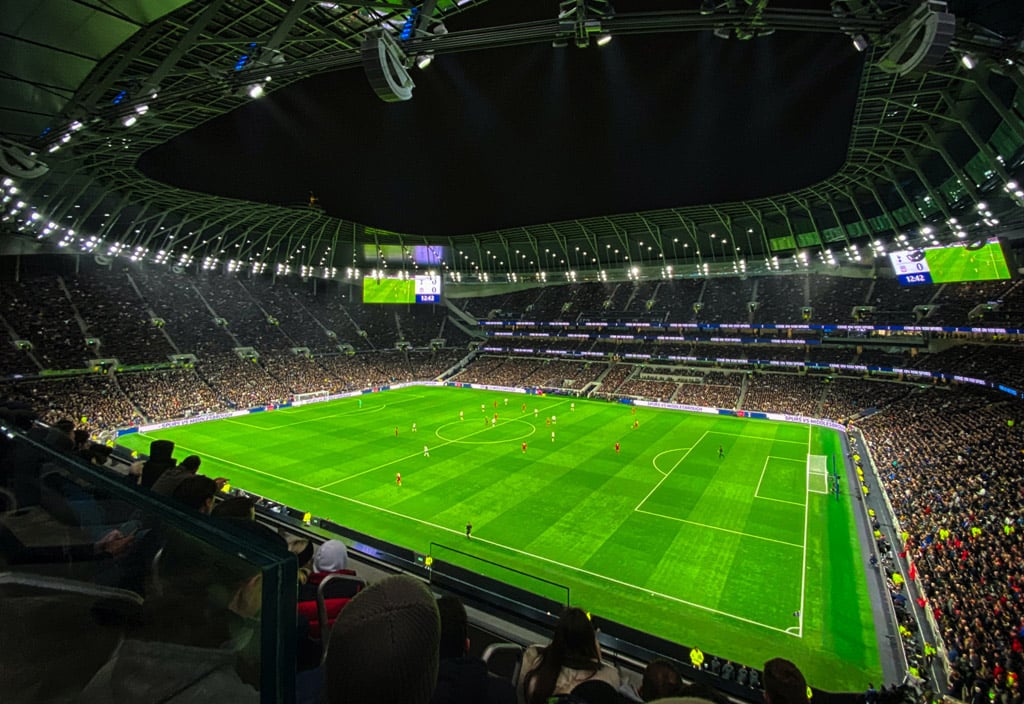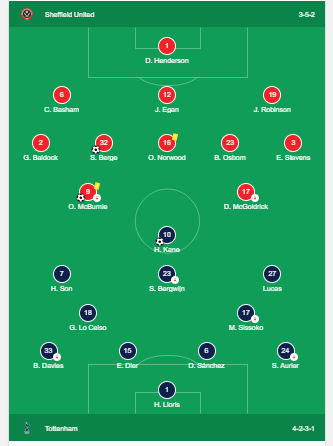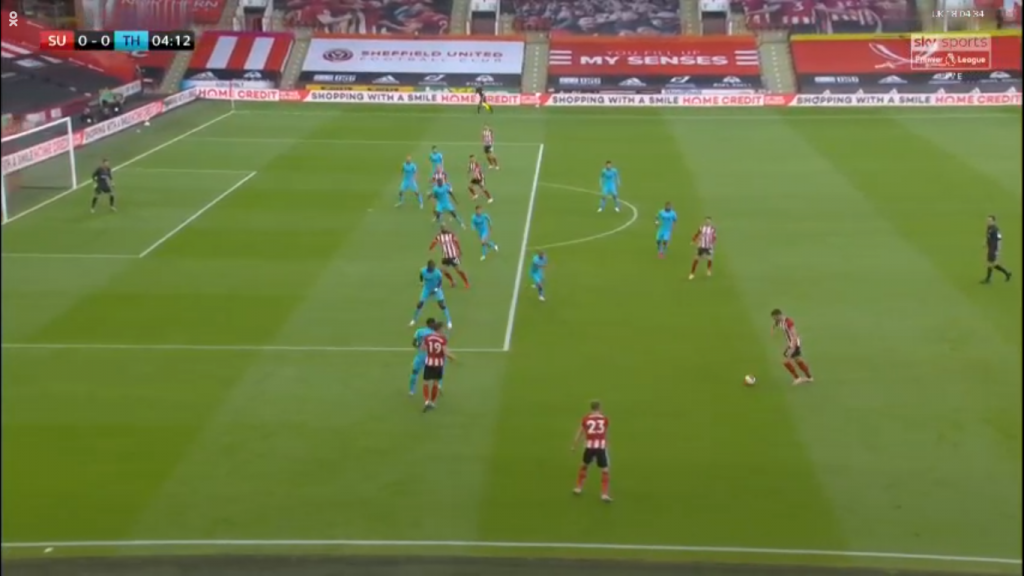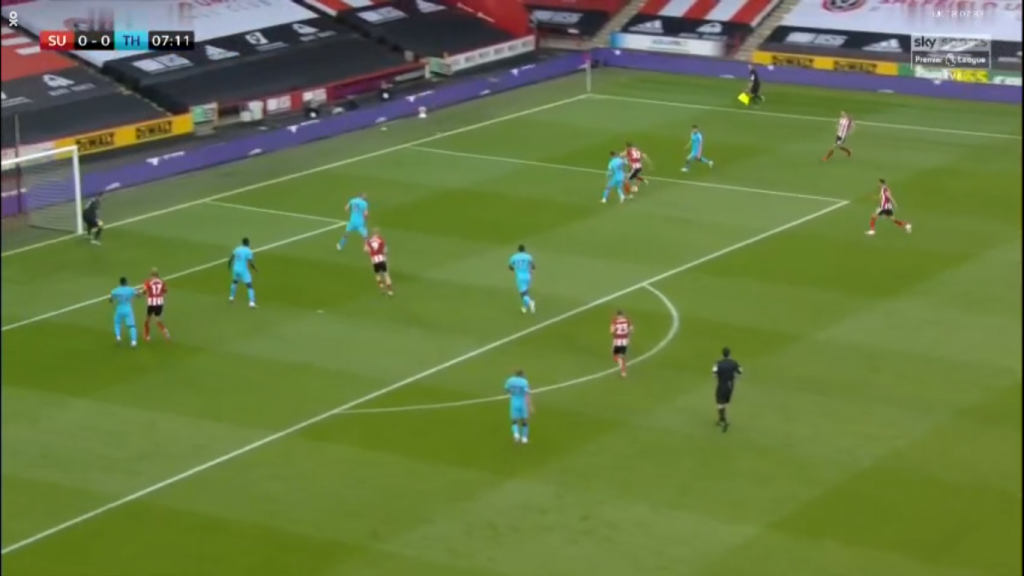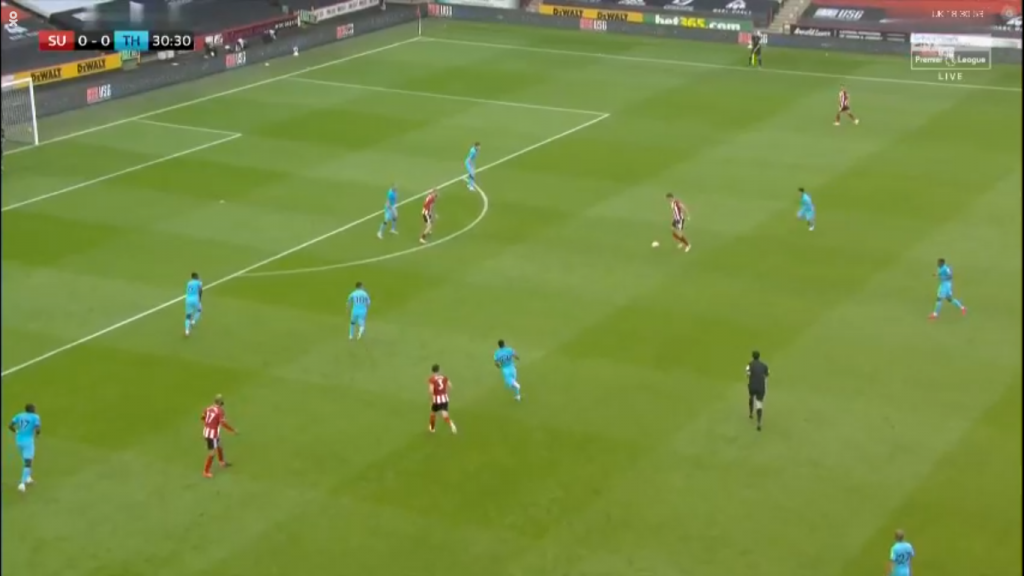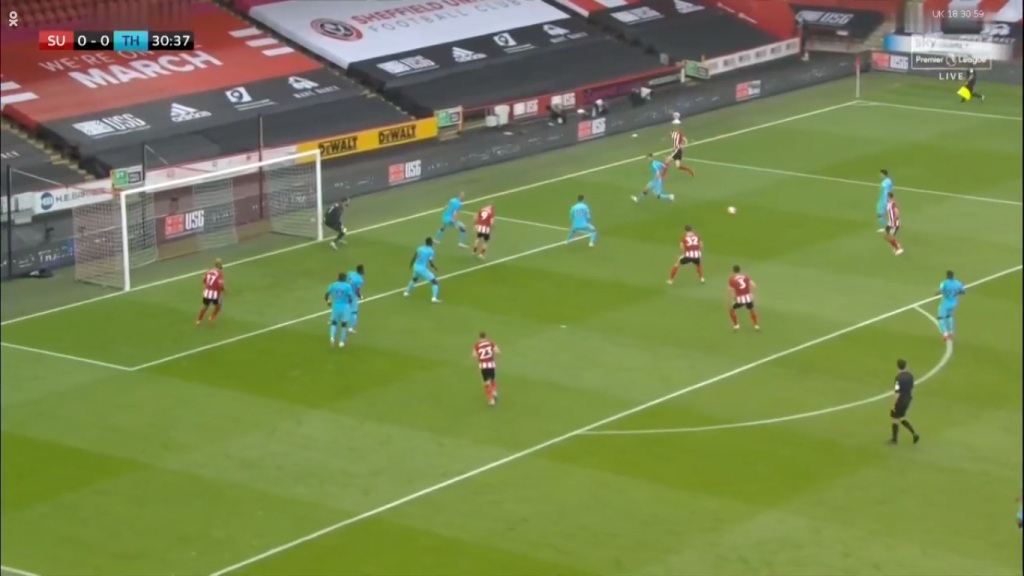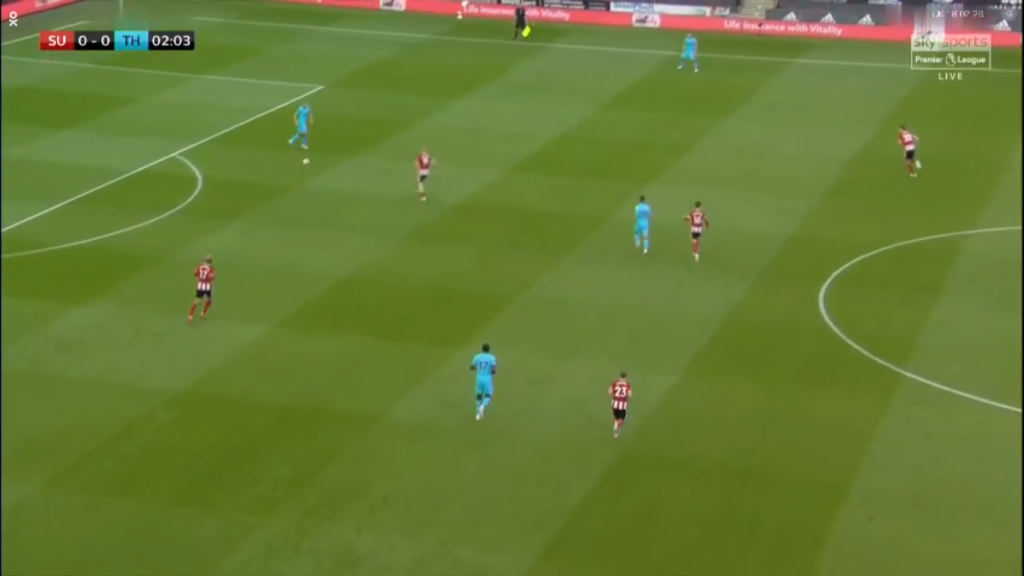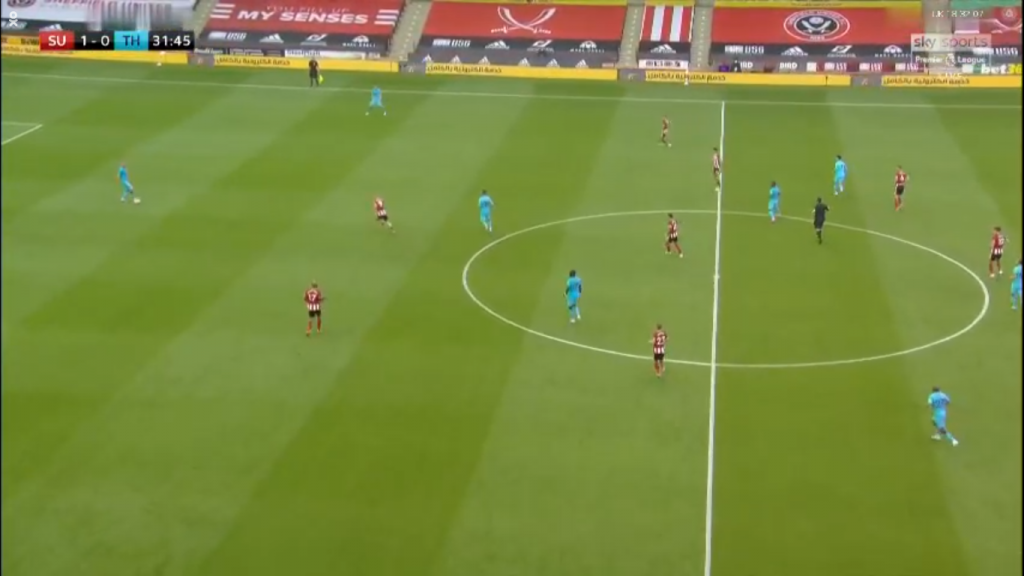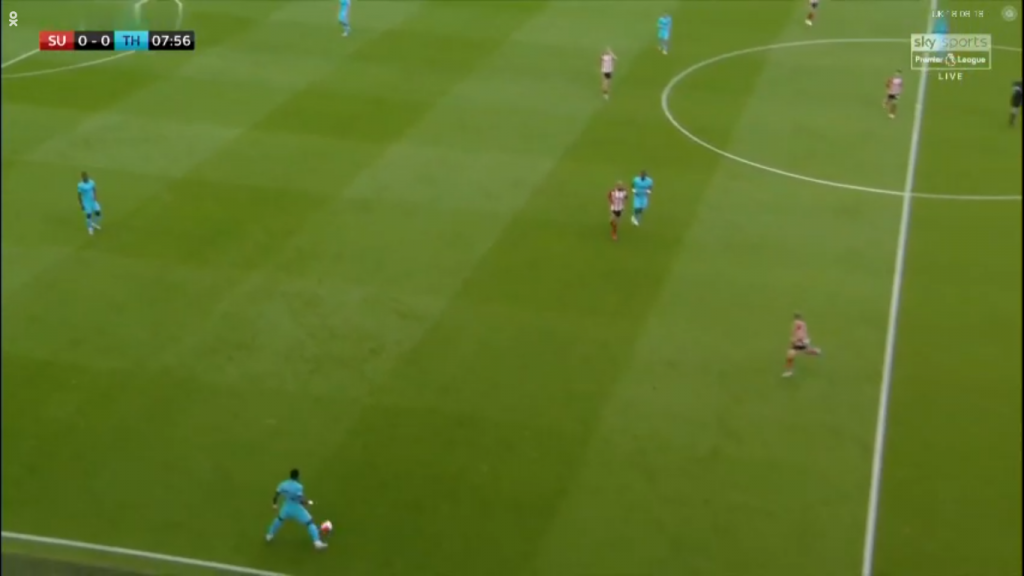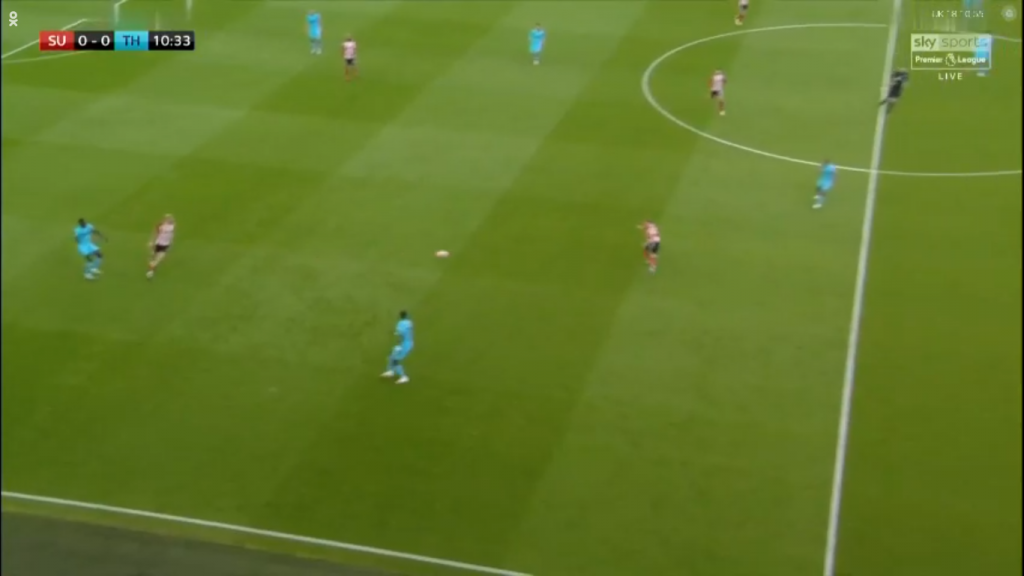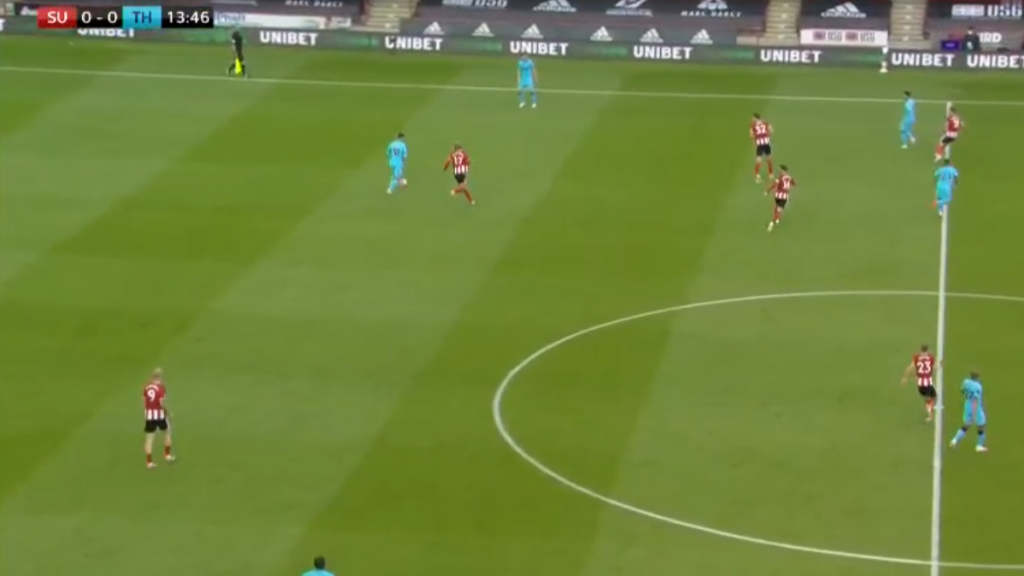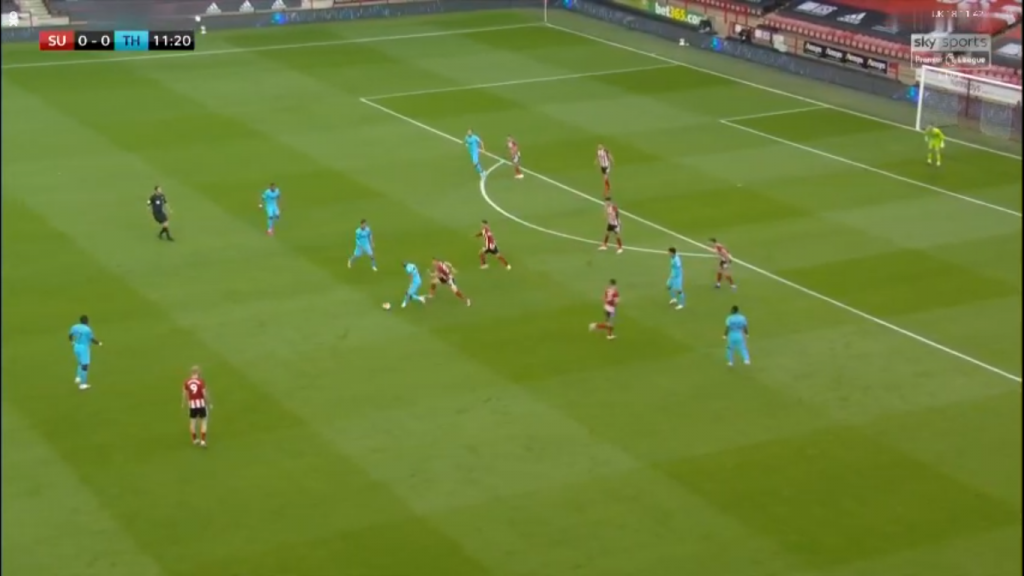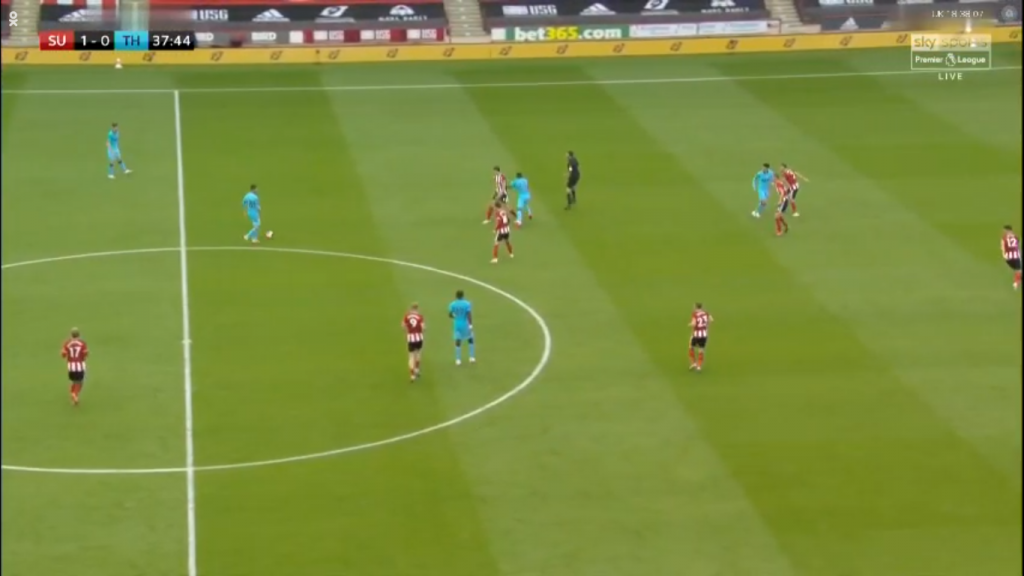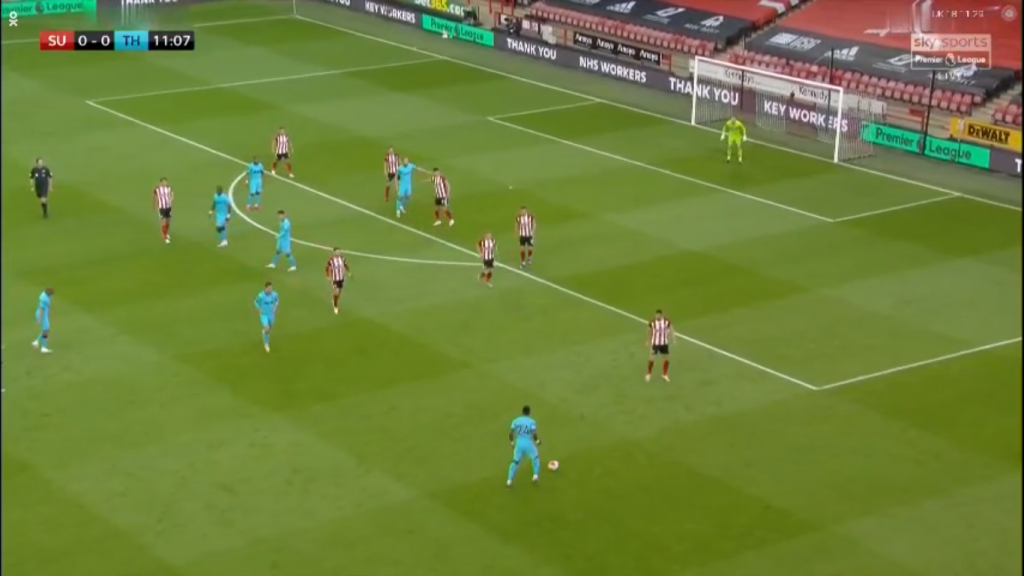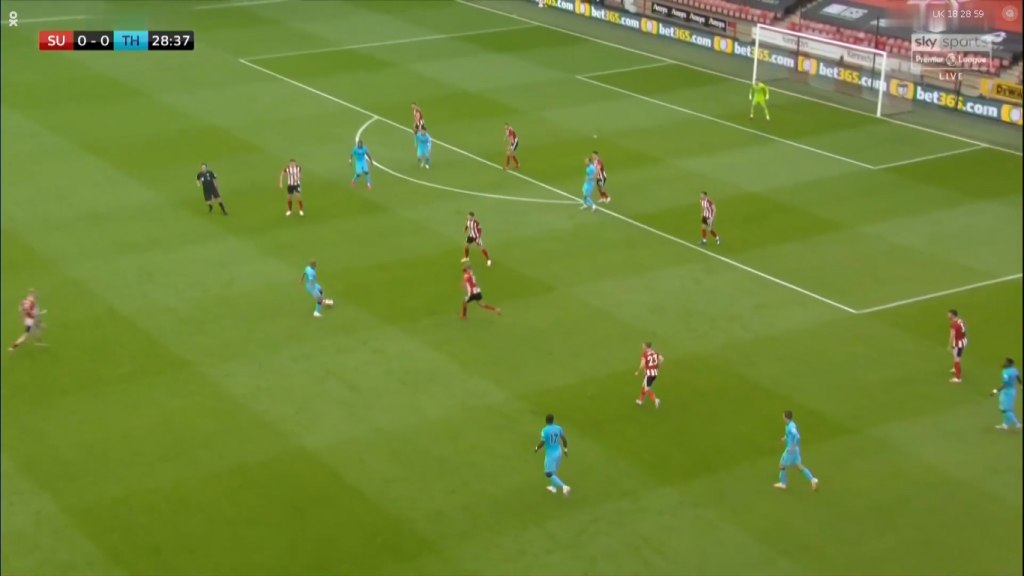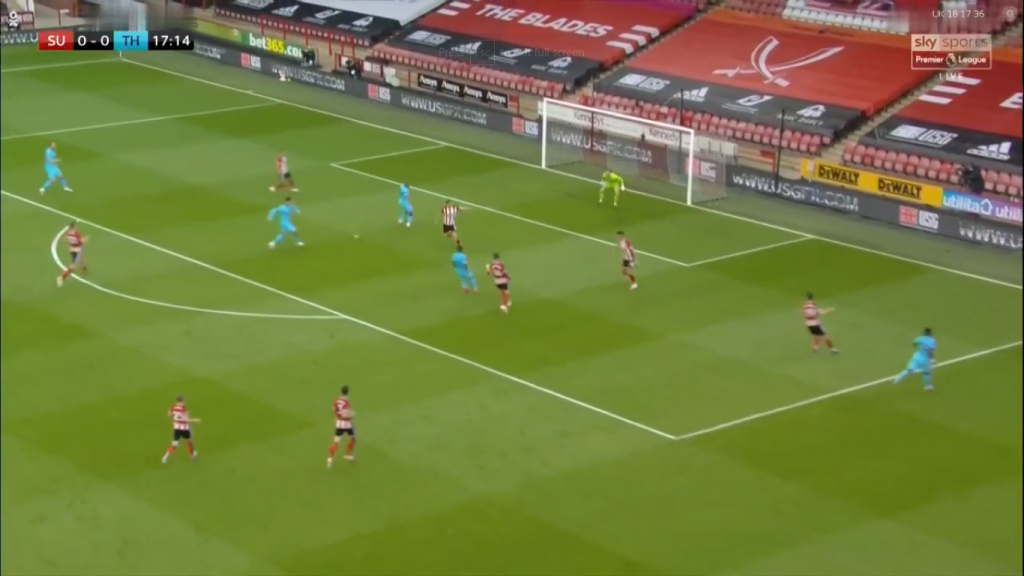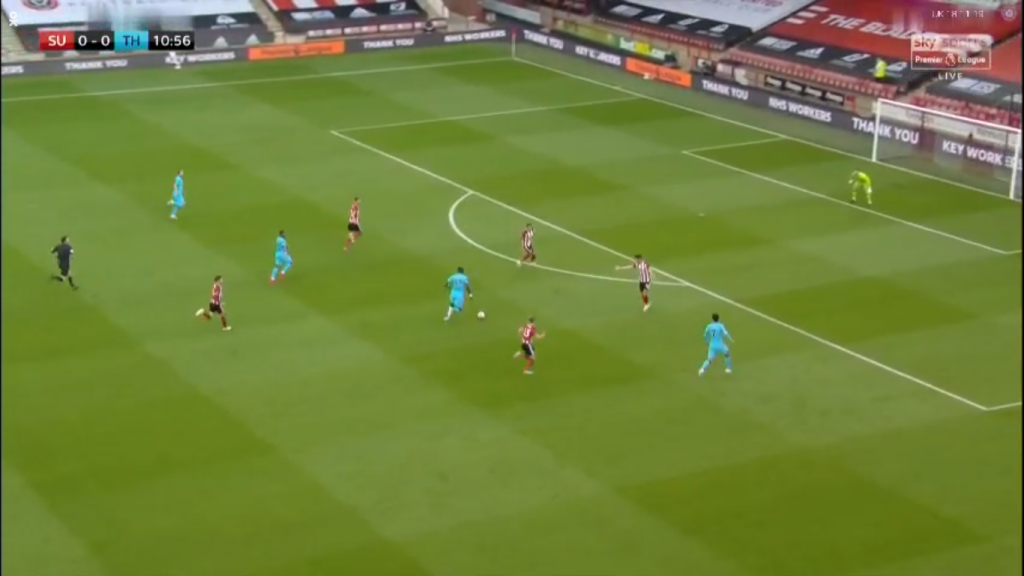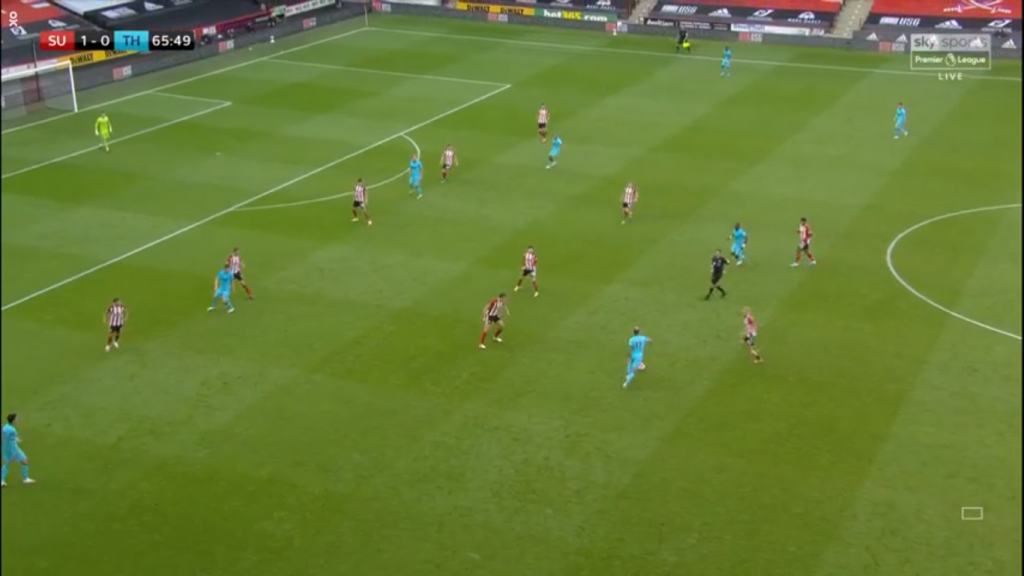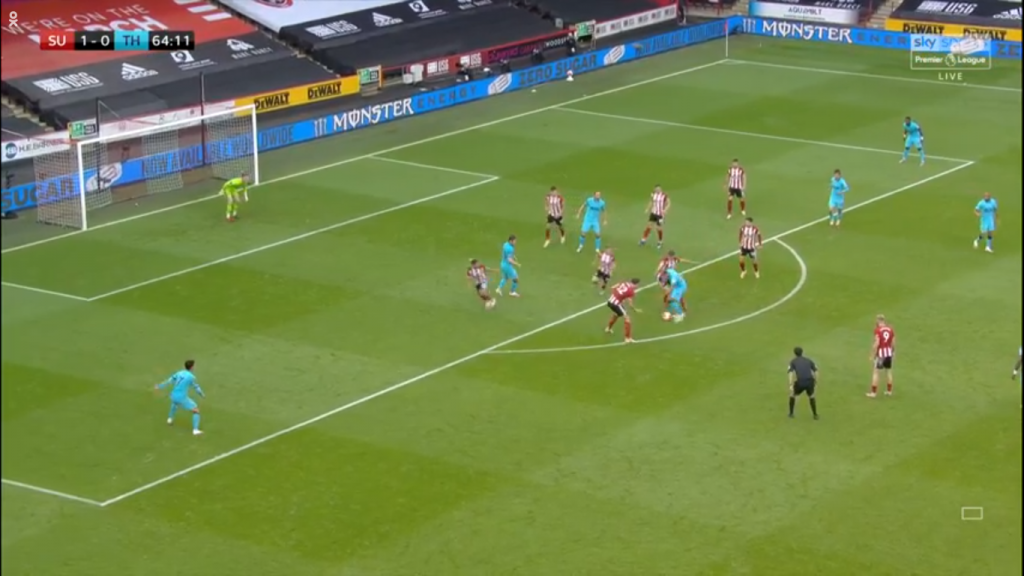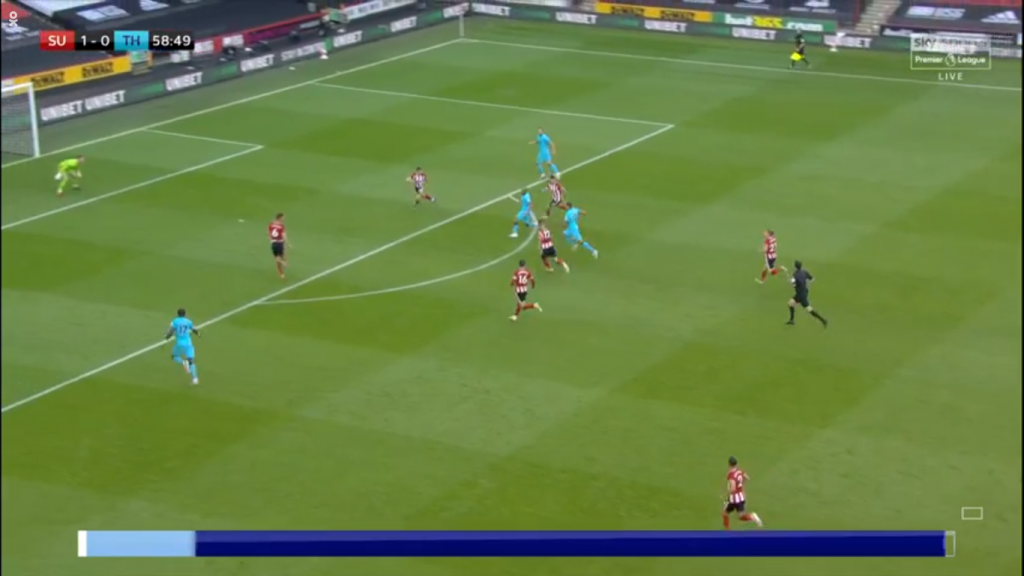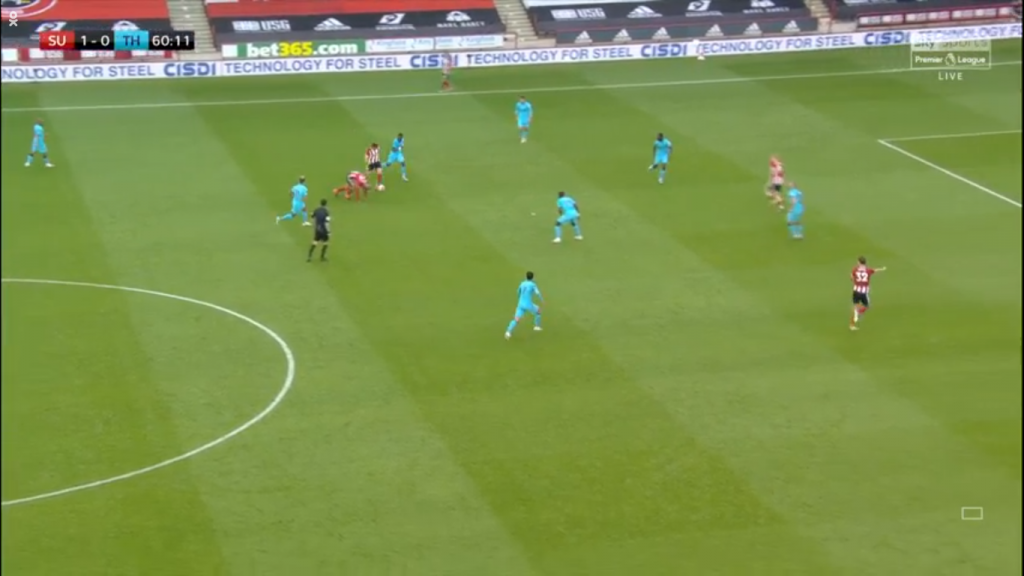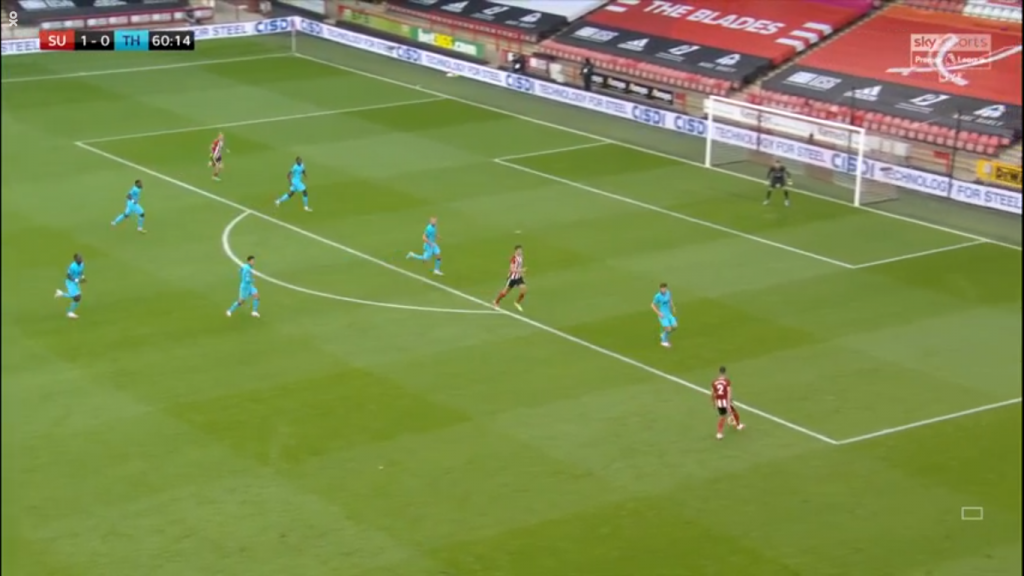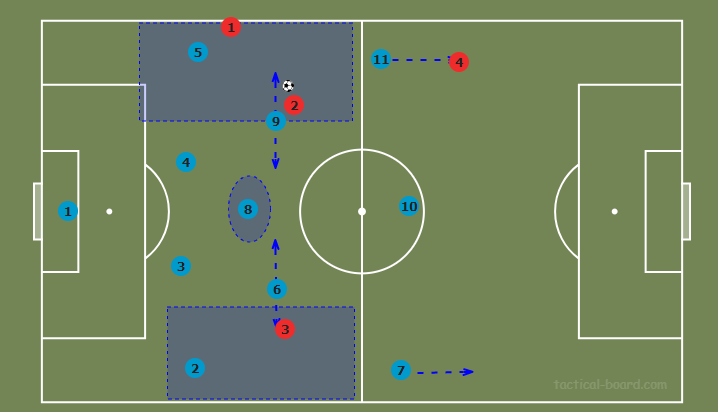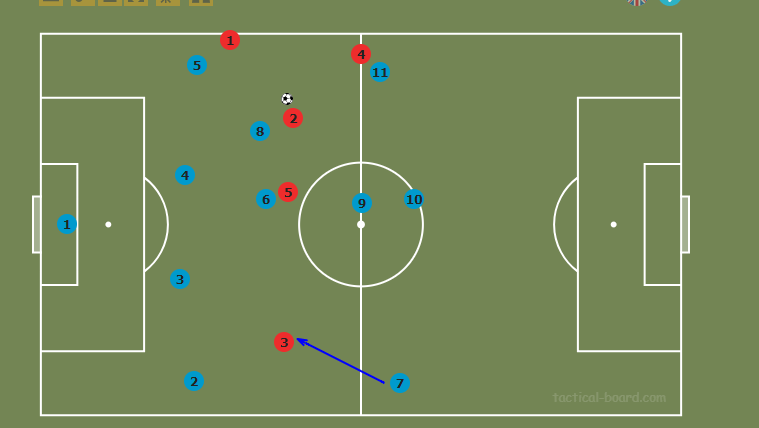Spurs looked to record consecutive victories for the first time since February (Sky Sports results) as they looked to push for European football. But the performance was far from indicative of a side with a European ambition.
The Line-ups
Both teams were as expected systematically, Sheffield United lining up in there customary 3-5-2 (5-3-2) with Mourinho sticking to his 4-2-3-1. But the major change for Spurs was the use of Bergwijn in the number 10 position replacing Dele Alli, Son and Lucas operated the left- and right-hand side of midfield respectively with Lo Celso and Sissoko in the midfield pivot.
Patterns
As documented in the preview, Sheffield United attempt to create overloads in the wide areas through triangles between Center midfielder, Center back, and Wing back. 79% of Sheffield United’s attacks came via the wide areas against Spurs (37% Left, 43% right) [Whoscored.com] indicating the heavy emphasis on creating through the wide areas. This was a warning sign for things to come (Image below)
Sheffield United were able to create frequent crossing opportunities in the wide areas, which can be pinned to individual errors but also systematic issues of the 4-2-3-1.
The midfield pivot of Lo Celso and Sissoko were required to block space on the insides but then also prevent overloads in the wide area, this was highlighted when Sheffield United moved the ball quickly switching one side to the other.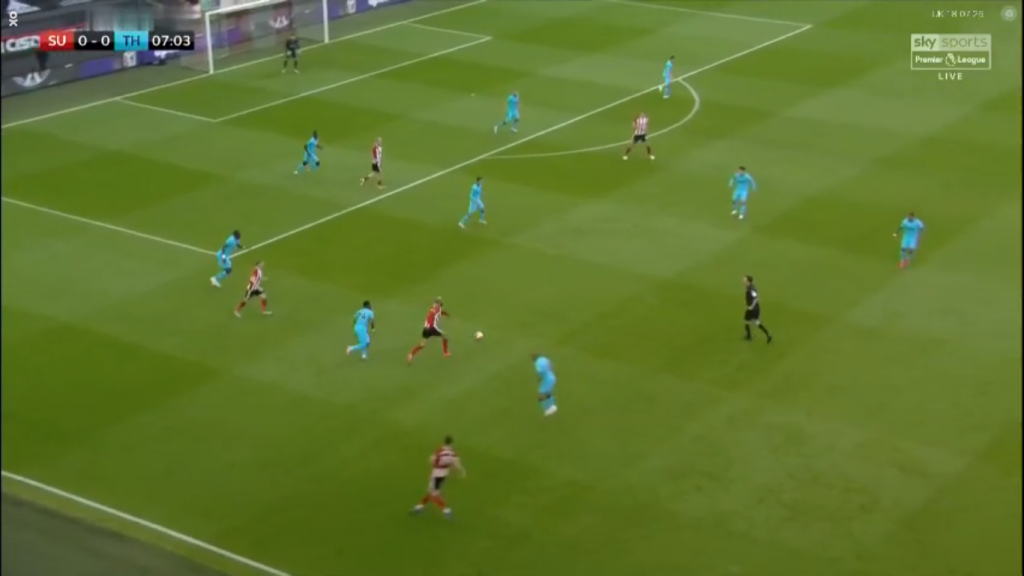
To prevent a wide overload on this Spurs’ right, Sissoko was asked to pull over to the right-hand side which caused a domino effect. As a result, lo Celso had to come central to prevent the passing option to the strikers with Son then covering the passing lane to the midfielder. But Sheffield United switched the play creating a very easy 3v2 situation on the right-hand side providing the Blades with a shot taking the opportunity. This pattern is where the first goal is conceded.
The Sheffield United player on the ball is found from a pass coming from the left-hand side. Again, look at the position of Lo Celso and Sissoko. Sissoko is forced outward to prevent the overload, with Lo Celso moving central on this occasion Son is attempting to recover but the space for the player on the ball available is very visible. He forces, the ball outside with Davies left 2 on 1, the Sheffield United wing-back cuts the ball back with the 3 Sheffield United players lining up while the Spurs backline fails to progress; 1-0 Sheffield United.
MORE SPURS STORIES
Another issue because of the 4-2-3-1 is building up. For Spurs, the primary driving force of the build-up is the midfield pivot, but Sheffield United closed this out in 2 manners. First as Sheffield United looked to press, the strikers pressed the ball while the midfield 3 of Sheffield United worked blocking the passing lanes into the midfield 2 with the 3rd midfielder blocking the secondary passing options. Or Sheffield United opted for a slightly more pragmatic approach with the front 2 blocking the passing lanes into the midfield pivot preventing the building up for Spurs.
This really halted Spurs in building up from the back. To resolve this and create space, the midfield split but this created further issues for Spurs making them more susceptible to counter attacks in dangerous positions.
This shape caused Spurs to constantly recycle the ball backward and sideways with limited passing options. Spurs completed 637 passes (SHU 312) yet only completed only 58 more passes into the final third than Sheffield United [Whoscored.com]. But when Spurs did progress into the final third, the offense was narrow limiting Spurs’ attacking potential with no attacking output on the left.
Spurs looked to threaten on two occasions. 1) When Spurs had an attacking option on the left.
As presented by the screenshots below: both the instances below this resulted in chances for Spurs.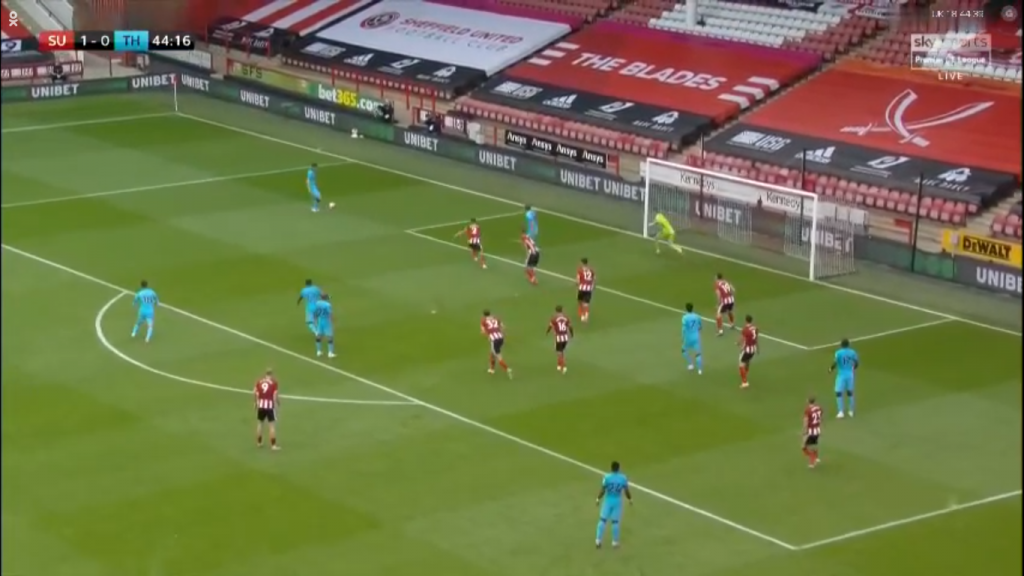
But as indicated by the positional report (whoscored.com), little width existed on the left-hand side.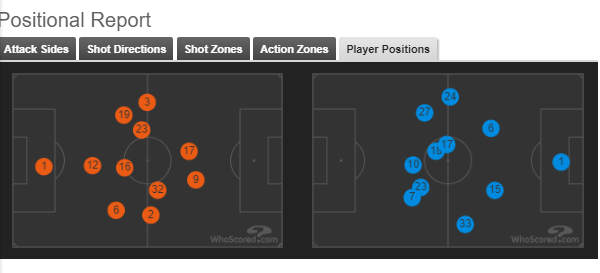
Spurs looked threatening on counter-attacking transitions but failed to register a shot on target from the below counter attacks.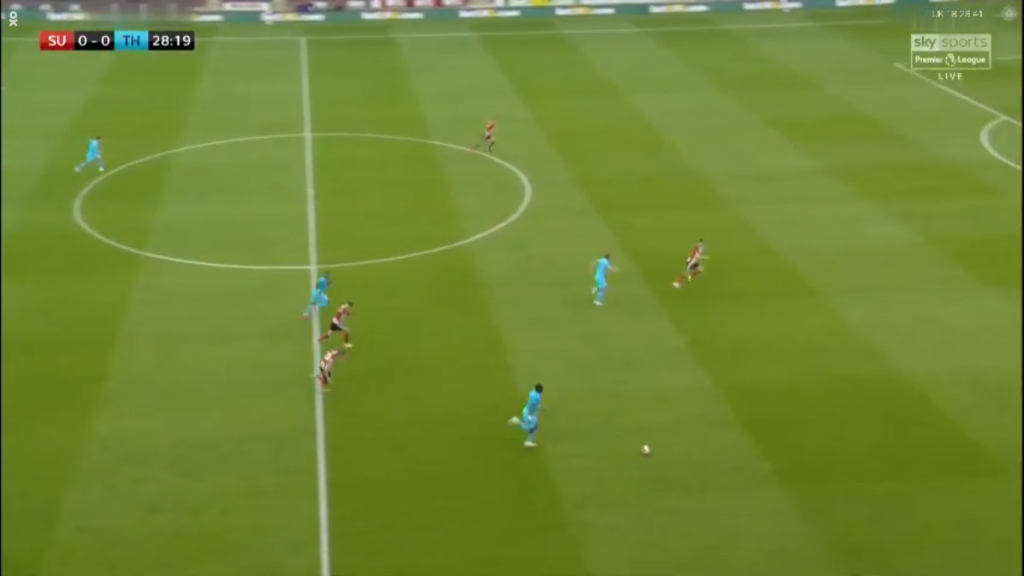
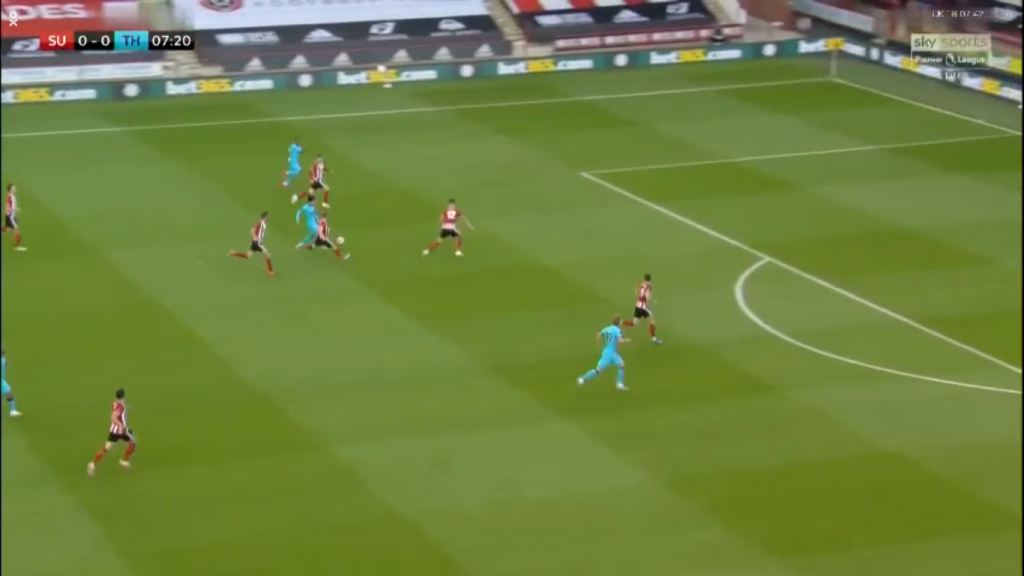
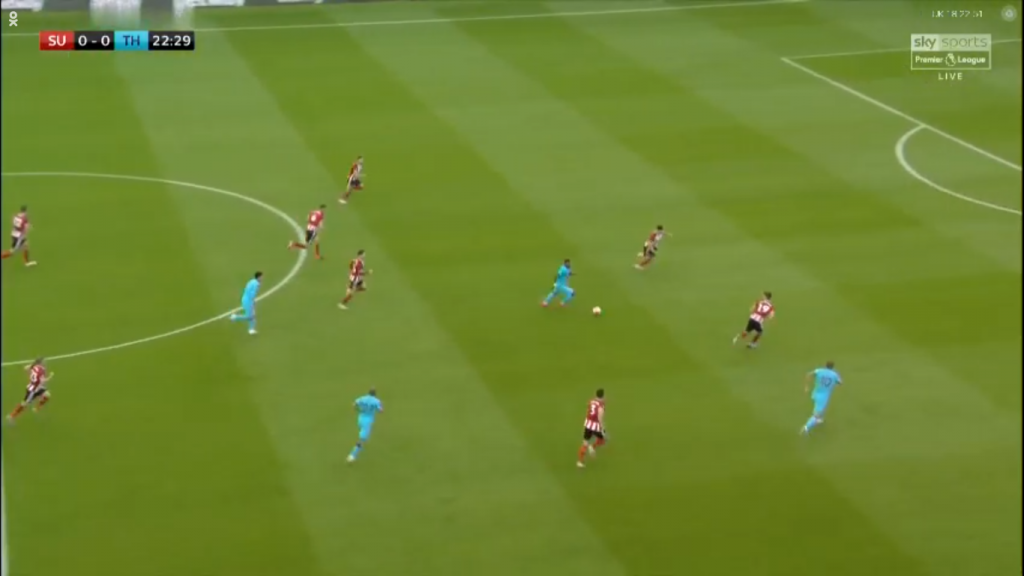
In the second half, the pattern very much continued, Sheffield United dropped deeper into a 5-3-2 block Spurs struggled to create big chances, having only one shot in the second period which was the consolation goal from Harry Kane (Whoscored.com). Spurs’ attacking shaped improve with multiple passing options available due to the advancement of Davies (as was discussed in the preview)
But Spurs struggled with the final pass in the crucial moments which was a common theme.
The defensive performance got a lot worse in the second half, with Spurs’ 4-2-3-1 very prone to quick switches from open play. Leaving the defense very isolated.
The second goal doesn’t have any tactical element associated with it. It can simply be attributed to the basics of defending & positional awareness missing. Sissoko lets his runner go, failing to track him. As a result, Sanchez is forced out, The Sheffield United attacker makes a run on the blind side of Aurier and then the ball is played into the box. Comical defending, to say the least, with the 3rd goal following a similar fashion.
Going forward:
As analysed above: The 4-2-3-1 may have systematically ‘cost’ Spurs this game, if we ignore the lack of sensible defending/ lack of final pass, Sheffield United very much controlled the game without the ball as well as look threatening as a result of wide overloads.
The 4-2-3-1 deficiencies are further highlighted with the lack of a true defensive midfielder with good defensive instincts and positional awareness. Lo Celso and Sissoko were tasked with competing with a midfield that outnumbered them while being responsible for preventing wide overloads with the responsibility to providing impetus to the offense.
The 4-3-3 will resolve a lot of issues:
As we saw on multiple occasions, Sheffield United were able to create wide overloads. Either through positional superiority or quick ball rotations. The 4-3-3 solves these issues, firstly the thirdmidfielder means a reduced burden of the pivot to cover the entire third this allows the screen to move horizontally effectively shielding the defense. As was discussed earlier due to the space available to extra (third midfielder), this meant in a 4-2-3-1 the corresponding winger on that side would have to come in narrow which would stop any counter-attacking potential (see image below)
By having that extra midfielder it reduces the burden on the wingers also leading to quick counter-attacking opportunities for Spurs through channel passes to both the wingers which play to many of the winger’s strengths e.g. Son, Lucas, Bergwijn – running and attacking spaces.
Midfielders: the extra midfielder reduces the physical and defensive burden on the midfielders. The dual eight positions are much better suited to the profiles of Sissoko, Lo Celso, etc allowing their strengths to come to the forefront which is transitioning/ ball-carrying with a reduced defensive burden.
As we also saw earlier, Spurs build through the midfield. The third midfielder better allows for triangles all over the pitch while allowing the defensive MF with the lynchpin to provide stability.
In conclusion, the 4-2-3-1 is ineffective. The 4-3-3 MUST be used going forward. A more in-depth analysis of the 4-3-3 will arrive in the near future, which in my opinion is much better suited to Spurs and can help transform this side.
Keep up to date with all the latest Tottenham news and opinion by following SpursWeb’s Facebook, Twitter and Instagram accounts.
